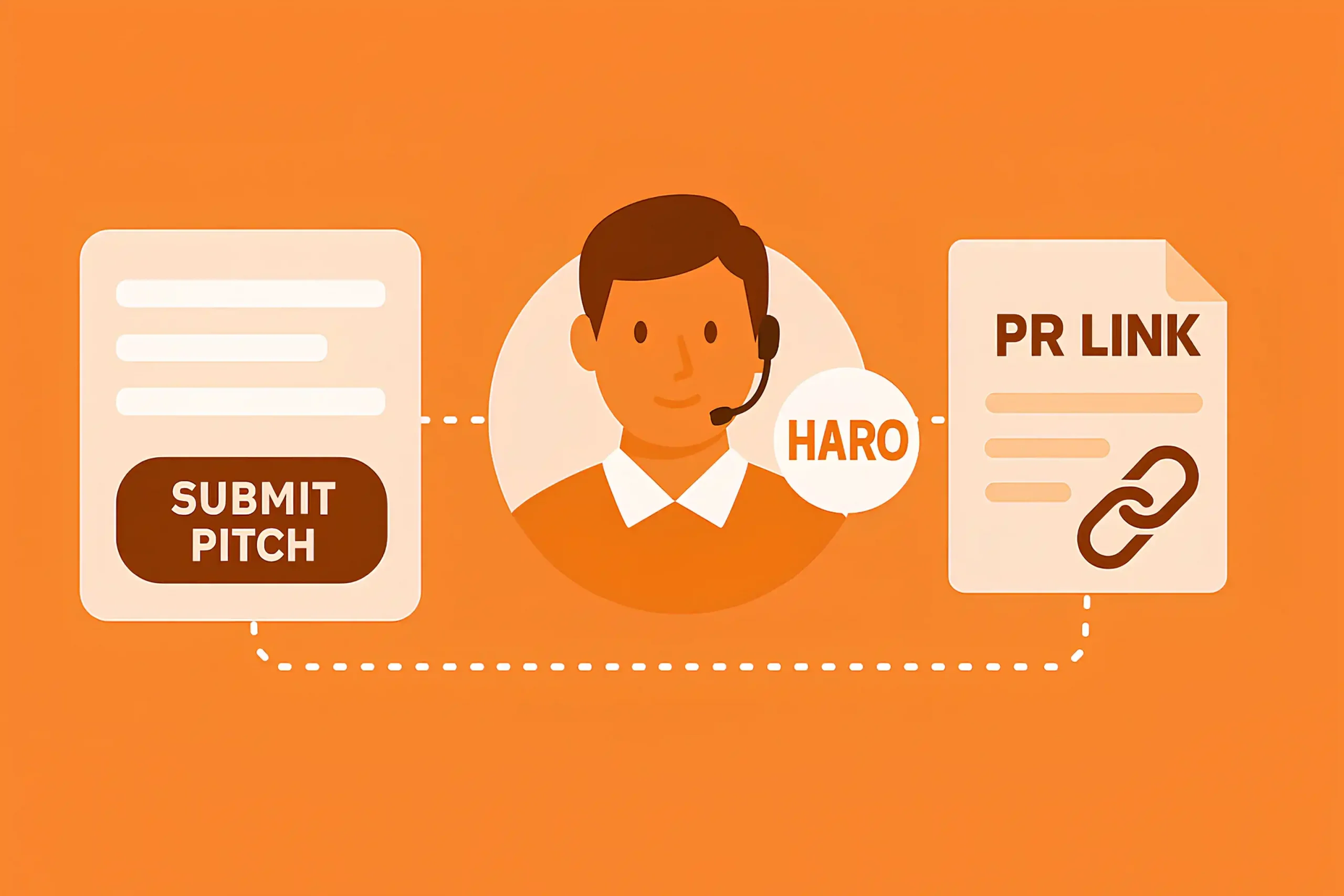Updated August 14, 2025
Enterprise Link-Building: Tips, Techniques, and Best Practices
I’ve not run hundreds of enterprise link-building campaigns, just a few. But what I learned from those few could easily outweigh a hundred mid-tier campaigns. When you’re dealing with websites that have thousands of pages, multiple departments, strict brand guidelines, legal approvals, and an approval chain longer than a CVS receipt, you quickly realize just how much is riding on you.
You can’t just put a list of prospects, write some outreach, and expect results. In the enterprise world, you’re often aligning with PR, syncing with content teams, respecting brand voice, and sometimes even waiting weeks just to get a link approved.
If you know exactly what I’m talking about, keep reading. In this guide, I will list some tips, techniques, and best practices for brands already generating millions of visits. Ready to level up? Let’s dive in.
What Is Enterprise Link Building?
Enterprise link building is the process of getting high-quality backlinks for large or complex websites, usually ones that belong to big companies with thousands of pages.
In simple terms, it’s still link-building, but with way more moving parts. You’re working around strict brand rules, legal approvals, multiple departments, and often very slow processes. Everything takes longer, and the stakes are higher, so you need better systems, better communication, and smarter strategy to make it work.
Enterprise Link Building vs. Traditional Approaches
| Aspect | Enterprise Link Building | Traditional Link Building | Key Difference |
|---|---|---|---|
| Scale | Targets hundreds/thousands of links across multiple teams or regions | Focuses on a few links at a time, often manual | Enterprise is large-scale, traditional is limited and slower |
| Tools & Systems | Uses advanced CRMs, APIs, custom dashboards, and automation tools | Relies on spreadsheets, manual outreach, and basic tools | Enterprise integrates with systems, traditional is more hands-on |
| Stakeholder Involvement | Requires cross-departmental input (SEO, PR, legal, product) | Usually handled by a small SEO or marketing team | Enterprise needs broader internal alignment |
| Content Assets | Leverages high-end resources like research, data studies, media kits | Typically uses blogs, infographics, and techniques | Enterprise assets are more authoritative and PR-friendly |
Common Challenges in Enterprise Link Building
I have a really interesting link-building case study for an enterprise SaaS company, where I share my experience working with CapCut as their link-building expert.
So, what I did not like there, honestly, is that you don’t just decide something and do it. Every blog post, anchor text, or link placement might need approvals from the brand, legal, PR, and sometimes even the CMO. One small change can take weeks, and by then, the link opportunity might be gone.
But to be fair, I’d say that a lot of stuff is different when you partner with an enterprise company, as a link-building agency, not a freelancer or in-house SEO expert. In this case, you’re pretty much handling everything on your own, especially if they already see you as someone they can trust.

One of the biggest challenges in enterprise link-building is scale. Some campaigns aim for 150 to 200 backlinks a month, and keeping the quality high at that pace is no joke. Link-building outreach, follow-ups, approvals, automation tools, backlink management, team communication; you have to go through all of it (haha). If your system isn’t tight, you waste hours trying to figure out what’s been sent, who replied, and what’s still pending.
Top 6 Enterprise Link-Building Techniques
Don’t be surprised if you don’t see anything about traditional link-building tactics like guest posting or niche edits. You can find those guides everywhere. Today, I’m sharing advanced techniques specifically for enterprise websites without any generic stuff.
| Technique | Effectiveness | Difficulty | Resource Allocation |
|---|---|---|---|
| Thought Leadership from the C-Suite | Very High | High | High (Time, PR, Content) |
| Digital PR | Very High | Very High | Very High (Agencies, Tools) |
| HARO | High | Medium | Medium (Outreach, Copy) |
| Linkable Content Creation | High | Medium | High (Writers, Design) |
| ABC Exchanges | Medium | Low to Medium | Medium (Network Building) |
| Unlinked Brand Mentions | Medium | Low | Low (Monitoring, Outreach) |
Thought Leadership from the C-Suite
This is one of those link-building techniques that sounds obvious but is rarely done well. Many enterprise companies miss out on massive authority backlinks because their C-suite is either too “busy” or they assume marketing should handle everything.
But when a founder or executive puts their voice out there, it is a completely different story. You can get links from places you’d never get through guest posting or PR outreach alone.
I’m talking about industry podcasts, digital magazines, analyst roundtables, and even YouTube interviews with niche influencers.
The goal is to have them speak like an industry operator; talk about market trends, challenges they’ve faced, frameworks they use to make decisions, and how they’re thinking about scale or efficiency.
For example, a few days ago, an editor from Businessinsider.com was looking to speak to someone for a first-person story about how they burned out and recovered.
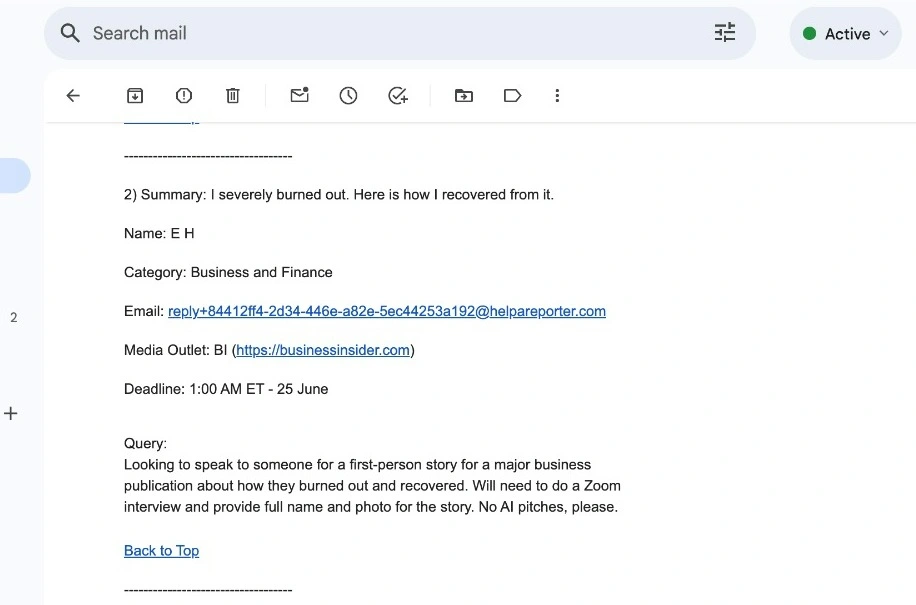
I’m sure there’s a good chance you’ll earn a brand mention or even a backlink to your homepage if you’re the one they choose.
But you should forget the generic PR lists and random podcast directories. For example, I use SparkToro to find where our audience spends time. It tells me which podcasts, YouTube channels, blogs, or social accounts people in our niche follow.
You can also use ListenNotes + Podchaser, which are great for filtering podcasts by topic, reach, and guest type. I always look at who the past guests were and ask: Do they link back? Do they cite guests in blogs? If not, I move on.
Join Slack Communities like Superpath (content marketing), Traffic Think Tank (SEO & marketing), or RevGenius (SaaS and B2B GTM)
Twitter/X circles of journalists (search “source request” or “need a quote”)
LinkedIn Posts by podcast hosts, industry analysts, and digital publication editors. Most podcast bookings happen in comments, not email pitches.
Just between us, if your founder has zero point of view, this won’t work. Enterprise link-building via exec thought leadership only works if the person has something to say. If they speak in templated answers or are afraid to say anything contrarian, it’s better to buy backlinks (haha, joking).
Believe me, editors want enterprise voices. When they speak, others listen. Editors and podcast hosts know that clicks go up when a known logo appears on their podcast.
Digital PR with SEO Objectives
A lot of enterprise companies are already doing digital PR without realizing they could double the value just by adjusting the intent. They’re submitting stories in TechCrunch, they’re quoted in Inc., they’re dropping new product announcements, but rarely are those assets crafted to include an SEO-friendly angle or a link-worthy asset.
Remember, once you start building your stories around things people search for, like data, trends, or expert insights, you’re not just doing PR anymore. You’re turning it into SEO, too.
The process usually starts by identifying campaigns that have both newsworthiness and a reason to be linked. That might be original data, a thought-provoking industry report, or even something interactive like an enterprise SEO ROI calculator or map.
Then, instead of just pushing it through your PR team, you build it with your SEO team from the start; choose a landing page that can earn rankings, structure your message with keywords in mind, and prep it to receive links before it even gets pitched.
One approach I love is analyzing a journalist’s intent before a campaign goes out. Use platforms like HARO, Qwoted, or even just scan Muck Rack for recurring queries in your industry. If you notice journalists consistently ask for data on, say, remote work productivity or AI spending in healthcare, you reverse-engineer that interest and build your next digital PR asset around it.
Digital PR for SEO only works if you have something worth referencing. That’s why enterprise companies often have an edge. They have data that no one else has. They have teams of analysts, researchers, and product leads, all sitting on insights that, if repackaged right, could earn top-tier PR links regularly.
Journalists don’t care about your SEO goals. It’s your job to give them something impossible to mention without linking. For instance, if you’re sending over a PDF attachment instead of a web-based asset, you’ve already lost.
HARO and High-Authority PR Systems
Every year, Google rolls out a couple of algorithm updates. Meanwhile, LLMs like ChatGPT, Gemini, DeepSeek, and others keep getting better at content, summaries, and even outreach-style prompts. Some SEO agencies already offer AI-powered SEO services, but HARO is still one of the best strategies out there.
I’ve been featured on Forbes, Zapier, CNN, TheMuse, and a bunch of other famous media publications. All through media outreach systems like HARO, Qwoted, Featured, and B2BWriter. If you have experience, original insight, and something meaningful to say, know that HARO link-building is one of the best link-building techniques for enterprise companies.
One of the first things I recommend for enterprise clients is to stop relying solely on inbox alerts. Use tools like Prowly, Muck Rack, or OnePitch to build media lists and monitor queries that align with your brand’s expertise.
For HARO specifically, Notion or Airtable is your best friend – they can automate a lot of part of link-building. We build internal dashboards for clients where we categorize journalist queries by topic, deadline, vertical, and the ideal spokesperson. This way, if a pitch opportunity around AI security comes in, your CISO doesn’t get 10 Slack messages; they just open the tracker, drop in a quick quote, and the outreach team handles the rest.
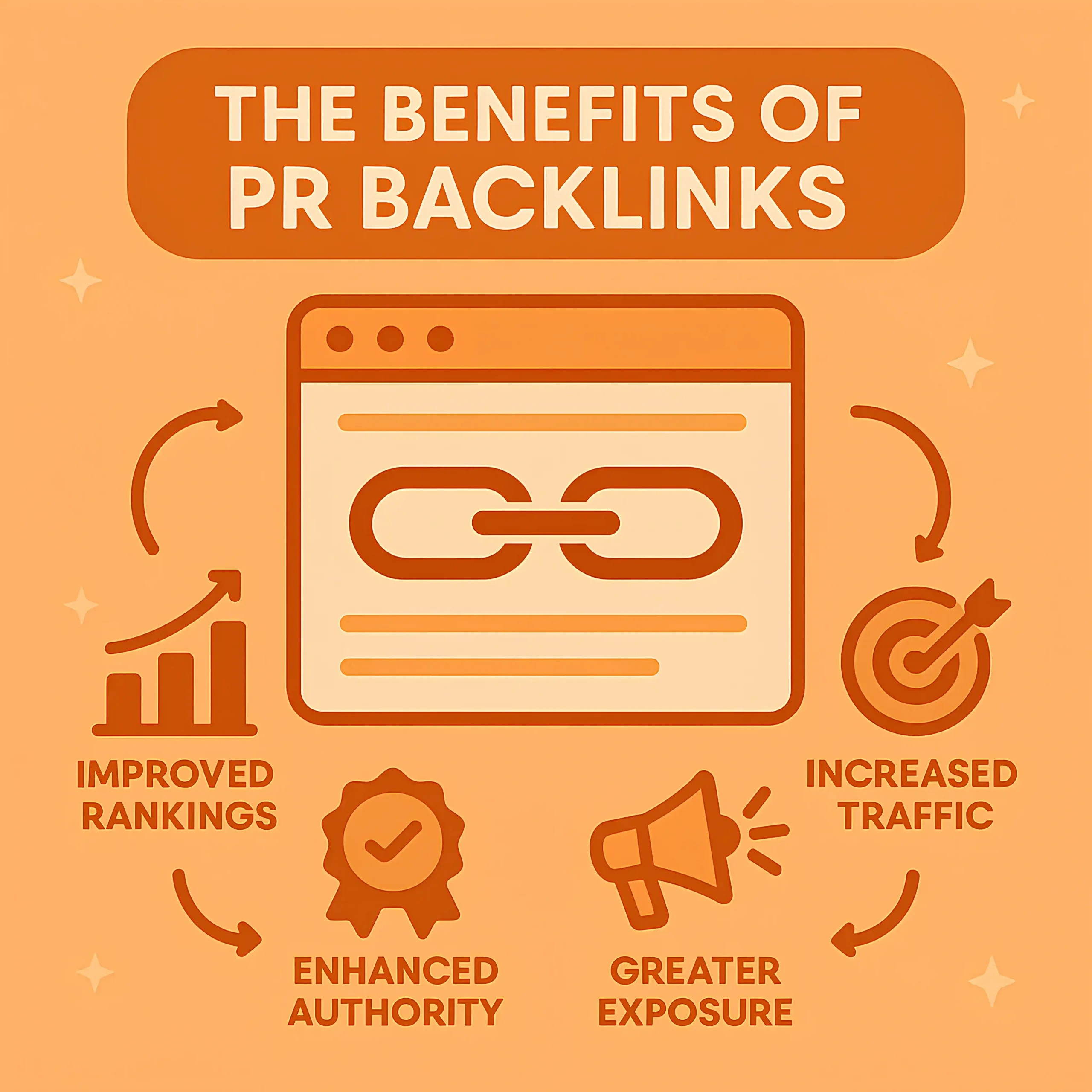
You can also set up Gmail filters to auto-tag HARO queries by keyword, like“cloud,” “eCommerce,” “SaaS,” “mental health,” whatever your business covers. Then, combine that with Zapier and have qualifying queries sent to a shared Slack channel or Google Sheet automatically, so your comms team is always working on the best-fit opportunities.
Pro tip: Most brands always pitch under one name, usually the CEO. That works, but if you have a head of product, CMO, or VP of strategy who can speak confidently, rotate them in. It makes your brand feel richer and more credible. Journalists remember when a company consistently gives them helpful input from different voices.
Passive Link Campaigns via Linkable Content
Nobody knows how many backlinks you need to rank. But what I do know from years in the game: you can’t spend your whole life earning backlinks. At some point, you need to build something that earns them without you moving your finger.
Most enterprise websites are competing in highly competitive markets. Their seed keywords are surrounded by companies with six-figure monthly SEO budgets, in-house content teams, and established digital presence. If you’re relying only on cold outreach, guest posts, or HARO, you’re basically bringing a weak strategy to a serious challenge.
So, technique number 4 – build linkable assets!
When you’re running enterprise-level passive link-building campaigns, the real challenge isn’t coming up with one great idea; it’s figuring out how to scale that success.
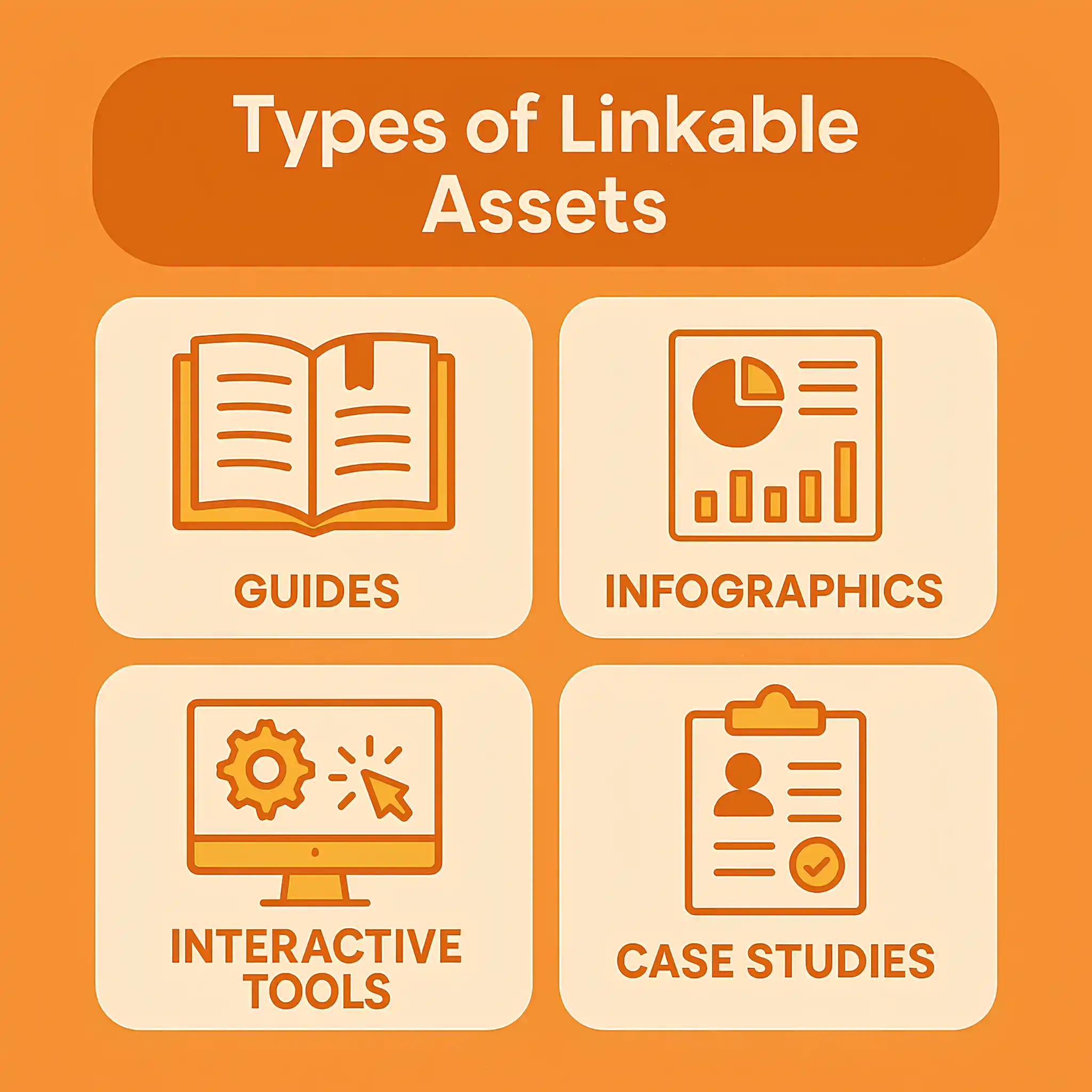
First, content ideation and validation needs to be faster, but still strategic. I usually rely on:
Ahrefs Content Explorer – not just to see what’s linked to, but to spot patterns. Which types of headlines, data formats, or industries are consistently getting picked up? Filter by “Referring Domains > 100” and “Published in the last 12 months” to avoid outdated content traps.
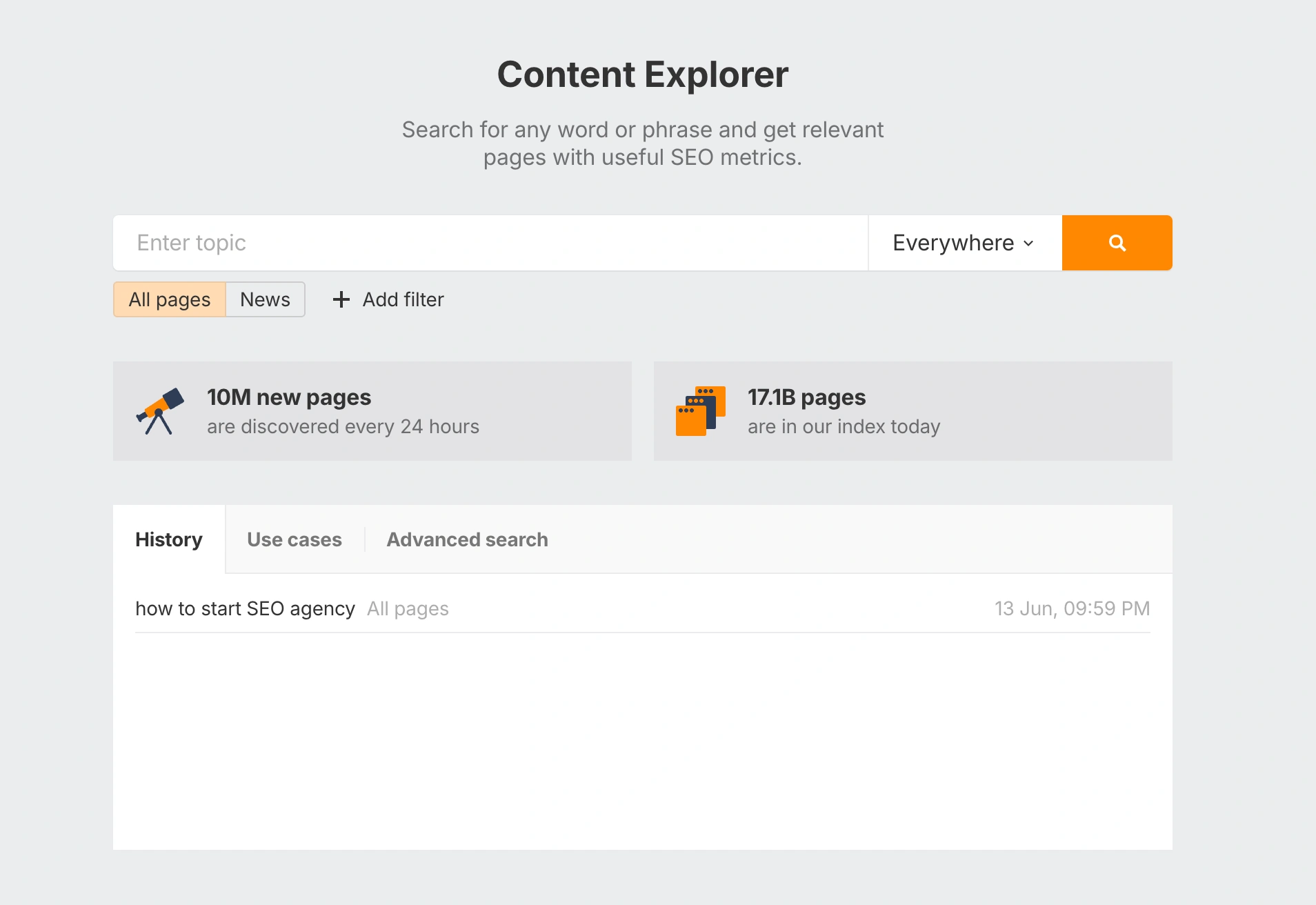
BuzzSumo – great for seeing what kind of content journalists, bloggers, and influencers are sharing right now. Also helpful for identifying the authors you may want to pitch once your content goes live.
SparkToro – underrated for finding where your target audience hangs out (I already talked about this software). If your asset is meant to attract backlinks from a particular vertical (e.g., SEO blogs), SparkToro helps you know who influences those spaces and what content they interact with.
For automation and scaling, enterprise teams need to stop thinking like bloggers and start thinking like product managers.
For example, you can use Notion + AI tools (like Claude or ChatGPT for SEO) to build content briefs at scale. I don’t mean handing over writing to AI entirely, but you can automate things like:
- Title variations
- Metadata and social copy
- Initial competitive summaries
- Basic data formatting for reports
Then, tools like Narrato, Content Harmony, or even MarketMuse can help prioritize topics based on linkability and topical authority.
If you’re producing quarterly research reports or data-driven guides, just standardize the process. Turn it into a repeatable format. Automate internal data, using Looker Studio, Tableau, or even BigQuery if your team has engineering support. That way, your analysts don’t spend three weeks just gathering numbers.
Outreach and Promotion:
Once it’s live, don’t just post it and wait. Automate the discovery of potential linkers using:
- Respona – fantastic for automating outreach workflows, especially for reaching journalists or bloggers who have linked to similar studies.
- Pitchbox – more powerful if you have a large outreach team or a CRM-like structure for link-building.
- Hunter + Google Sheets + Mail Merge (or Mailshake) – still works, especially for custom pitches that don’t feel robotic.
ABC Exchanges
SEO without link-building is like trying to win a Formula 1 race with a flat tire. You’ll go nowhere fast. But, if you’re thinking of doing link exchanges, it’s even easier to crash the whole site if you don’t know what you’re doing.
Google’s been pretty vocal about “link schemes,” and traditional one-to-one link exchanges are usually a terrible idea, but ABC link exchanges still work.
If you’re managing SEO at an enterprise level, especially for SaaS, tech, or platforms that publish a lot of content, ABC link exchanges are one of the few scalable tactics that can move the needle without any red flags in front of Google’s spam filters.
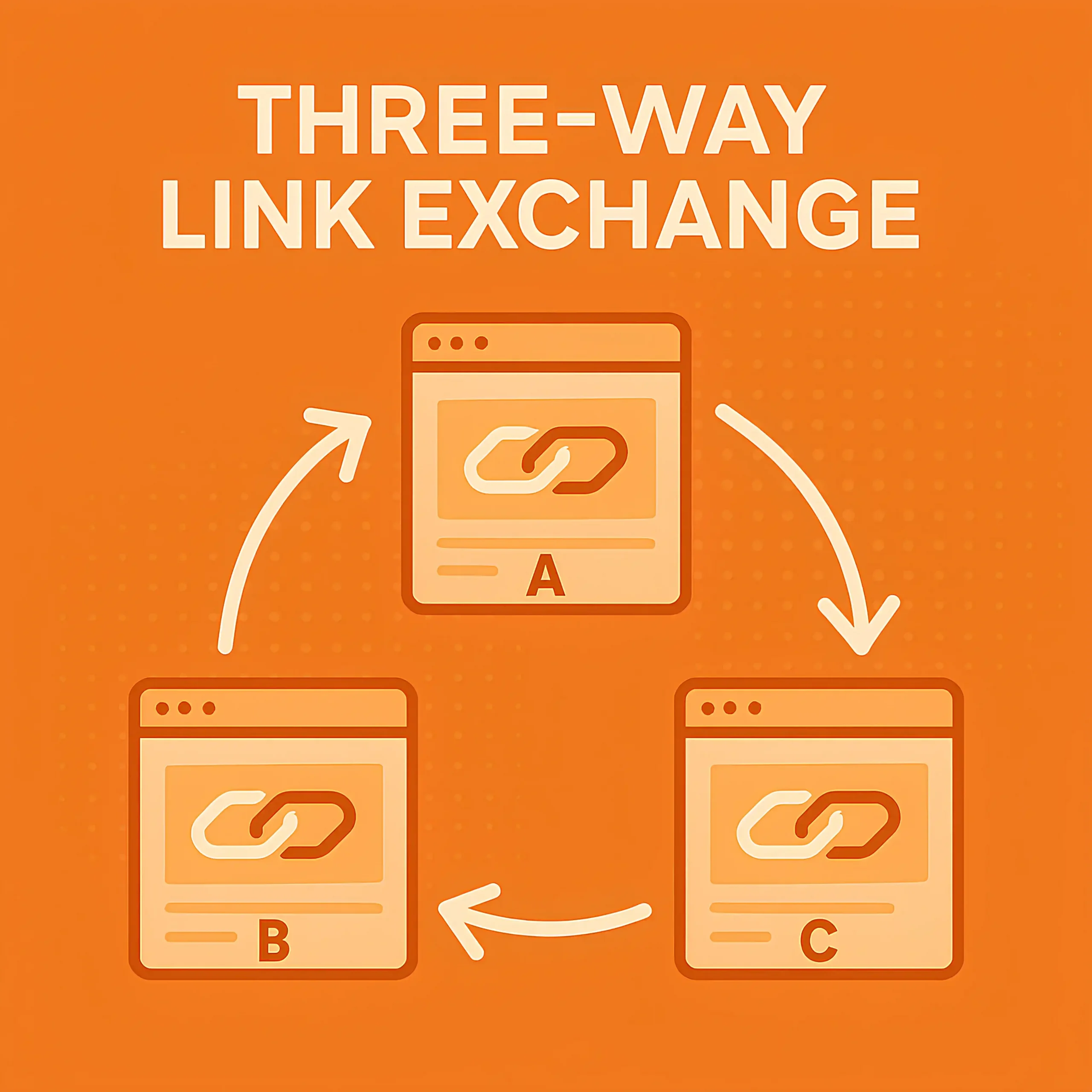
So, instead of linking to someone and expecting a link back to the same domain, you create a triangle. You link to site B, site B links to site C, and site C links back to you. As long as each of those domains is clean, contextually relevant, and there’s editorial control over what gets published, the footprints are practically invisible.
If you’re working with a real SEO agency, the risks are next to zero. Agencies like mine have done hundreds of ABC-style exchanges across SaaS, eCommerce, and fintech, and we know exactly how to source partners, set up the flow, and keep everything under the radar.
Pro tip: Before enterprise companies dive in, they need to be honest about two things. First, are you prepared to create enough high-quality content to support this strategy? ABC exchanges require real assets. You can’t offer thin category pages or AI content (without a human touch) and expect serious websites to link back.
Second, you need to have the systems in place to track all of this. That means logging who linked where, on what date, what type of anchor, which page, and checking that those links stick.
Unlinked Brand Mentions
If I ever skipped this strategy for an enterprise client, I’m pretty sure they’d wonder if I even know what I’m doing. Frankly, they’d have every right to ask. Unlinked brand mentions are one of those low-hanging opportunities that, once you see the scale of them, especially for bigger brands, you can’t unsee.
It’s the kind of thing that quietly builds real authority (I’m not talking about Moz DA, LOL) without blowing up budgets. Yet, oddly, so many SEO teams either forget about it or bury it under more common link-building tactics.
So what exactly are unlinked brand mentions? It’s when your brand, whether that’s your company name, your product name, your CEO’s name, or some identifiable entity, gets mentioned on another website, but without an actual link pointing back to your site.
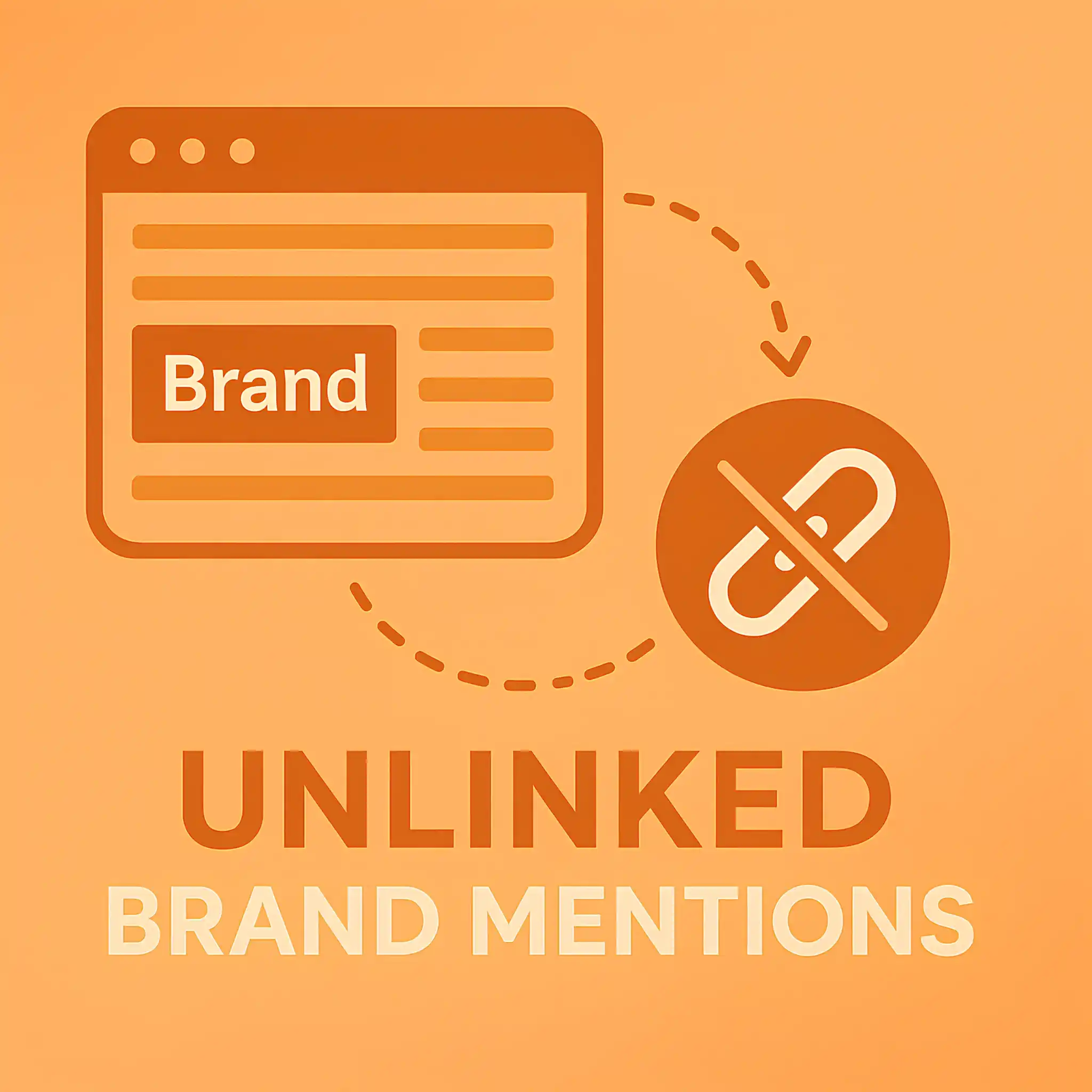
For smaller companies, this happens occasionally. But for enterprise brands, it’s happening constantly. News articles, roundup posts, business directories, podcasts, SaaS reviews, university citations, you name it.
It’s almost cost-free. You’re not begging for a backlink from scratch. You’re just asking someone to turn an existing mention into a live link. Nine times out of ten, they say yes, because the content already mentions you and they’re not being asked to add anything new.
Tools like Ahrefs Content Explorer, Brand24, BuzzSumo, and even Google Alerts can help you track down where your brand is being talked about online. For example, Ahrefs lets you filter mentions that don’t already link to your domain, which saves you a ton of time.
How to Strategically Allocate Link-Building Budget (for Enterprise Scale)
One of the biggest mistakes I see from enterprise teams is spending blindly. Either they invest the whole thing in PR without a real SEO plan behind it, or they go all-in on low-tier links, trying to hit some arbitrary quantity. Neither works long-term.
You need to treat your link-building budget like an investment portfolio. Different assets, different weights, different purposes. Here’s how I typically break it down.
60% Authority Acquisition
If you want your brand to be associated with high-authority domains, but also look at traffic, editorial strength, and how natural the content feels, try HARO, PR placements, and even free guest posting opportunities in your niche.
I usually budget anywhere from $300 to $1,000 per link, depending on the publisher, but the ROI here is long-term authority. Google notices when your brand gets linked from real media and respected blogs.
30% Topical Depth & Internal Boosters
Once you’ve established authority, you need to distribute it internally and build depth. I set aside around 20% of the budget for links that go directly into long-tail content or MOFU and BOFU blog posts.
You can use guest posts, niche edits, or even link exchanges if they’re well-managed and contextual. This way, you can support your clusters and help pass that hard-earned authority from your big links down into the pages that are targeting search queries.

10% Passive Link Assets
As I said, sometimes you create something so useful it earns links on its own. Tools, data visualizations, calculators, and original research; these are passive link assets. If you do it right, they’ll attract mentions naturally over time. I usually allocate 10% of the budget here, but it’s more about the output than the spend.
If you want to learn more about enterprise SEO pricing, check out my detailed guide where I explain everything step by step.
Pro Tips for Enterprise Companies
Use Sitebulb or Screaming Frog to crawl your entire site and extract every anchor text/URL pair. What you’re doing here is getting a full snapshot of where links exist, what text is being used, and where the authority’s flowing naturally. From there, build a keyword-to-page map.
Now, if you’re on WordPress, tools like LinkWhisper can save you hours (however, manual review is a must). You can batch-insert internal links using your mapping sheet, targeting commercial pages from high-performing blog content.

But if you’re running on a custom CMS or something more locked-down, I’ve seen teams use Python scripts with NLP models to programmatically insert links based on keyword relevance and sentence context.
You can also redirect link equity. If your blog content earns links naturally, use internal links (or even full-on 301s when the content gets outdated) to pass that authority into your product or service pages.
Is Guest Posting Still Effective for Enterprise-Level SEO?
Yes, of course. Guest posting is still absolutely effective, even at the enterprise level. According to statistics, it consistently ranks as one of the most used and trusted link-building techniques among large-scale companies.
Should Enterprise Sites Prioritize Homepage or Deep Page Backlinks?
If you run an enterprise site, focus most of your backlink effort on the homepage and bottom-of-funnel blog posts that speak directly to buying intent. Those pages let you push authority inward through smart internal links, helping your product and category URLs rank without raising red flags to Google.
Yes, you can still target commercial pages with a few paid placements or product-review links, just keep your backlink profile looking natural.
How Often Should Enterprise Sites Audit Their Backlink Profiles?
I recommend a light backlink profile audit every month just to spot anything weird early, and then a full deep-dive every quarter. You can also use tools like Linkody to track your live backlinks’ status (e.g., lost links).







